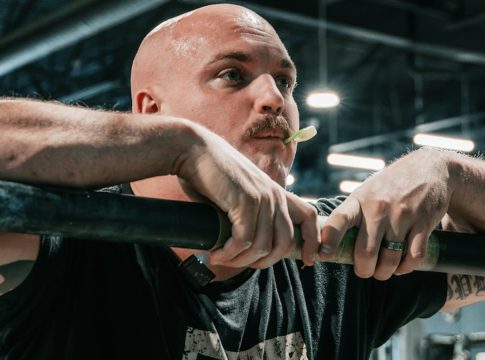Elevate Your Deadlift: The Power of Core Strength
Breaking through deadlift plateaus can be one of the most challenging hurdles for weightlifters. If your lifts feel stagnant or you’re struggling to reach new personal records, it may be time to reassess your training regimen. According to fitness expert Mitchell Hooper, a three-time Arnold Strongman Classic champion, enhancing core strength could be the key to unlocking your potential.
Master Your Deadlift Technique
Deadlifts are a complex lift that engages multiple muscle groups, including the posterior chain, upper and mid-back, and yes, the core. Research indicates that attempting lifts when fresh boosts performance and allows you to push closer to your personal best.
Training Frequency Matters
To avoid burnout, balance your training frequency with adequate recovery. Here are a couple of key strategies to implement:
- Frequency without Overexertion: Aim for several training sessions each week but avoid going all-out every time. Allow for physical recovery so your body can adapt and grow stronger.
- Rest and Recovery: Research suggests that taking longer breaks during compound lifts can significantly enhance both strength and power. Incorporate these breaks into your training regimen to maximize your output.
Hit Those Sticking Points
To combat common sticking points in your deadlift, like slow pulls or instability at the top of the lift, Hooper recommends a two-pronged strategy:
- Lighter Explosive Lifts: Perform deadlifts at 60-75% of your one-rep max. This helps build explosive power from the floor.
- Lockout Strength Training: Incorporate pause and snatch grip deadlifts, which increase your range of motion and encourage raw strength.
The Essential Role of Core Strength
Beyond perfecting your lifting technique, building a strong core is paramount. A robust core stabilizes your spine and pelvis during heavy lifts, reducing the risk of back injuries that can sideline your progress.
How to Build Your Core
- Isometric Exercises: Focus on bracing your core while lifting. This transfers leg power effectively to your upper body.
- Volume and Frequency: Train your core with high frequency—think several sets of 15-second planks or hanging leg raises, three to four times a week. The emphasis should be on high volume but short durations to maximize effectiveness without overtaxing your muscles.
Key Takeaways:
- Train Smart: Balance frequency and recovery for optimal performance.
- Strengthen Your Core: Don’t neglect your core; it’s crucial for effective lifting.
- Use Variations: Implement variations like lighter, explosive lifts and pause deadlifts to break through plateaus.
Incorporating these strategies not only enhances your deadlift performance but also provides a solid foundation for overall strength and fitness. Whether you’re a beginner or a seasoned lifter, remember: every small improvement contributes to your long-term success. Keep striving for progress, and before you know it, you could be achieving new personal records!

Covers wellness, nutrition, mental health, and daily life tips.
Bio: Talia brings a background in health journalism and holistic living to help readers live better, one tip at a time.

